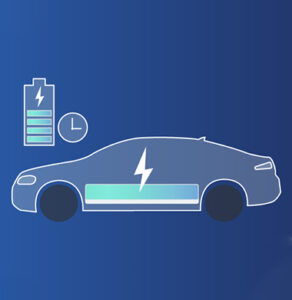In today’s fast-paced world, electric vehicles (EVs) are gaining popularity for their environmental benefits and cost savings. Among these, Tesla stands out as a leader in the EV market, known for its cutting-edge technology and impressive driving range. However, potential Tesla owners often wonder, “How long does it take to charge a Tesla?” In this blog post, we’ll dive into the various factors that affect Tesla charging times and provide you with essential information for planning your EV journeys.

Charging Basics
Before we delve into the specifics, it’s important to understand that there are three primary types of Tesla chargers:
1. Level 1 Charger: This is the slowest charging option, typically using a standard 120-volt household outlet. It provides approximately 3-4 miles of range per hour of charging.
2. Level 2 Charger: This charger operates on a 240-volt circuit and offers a faster charging rate, typically around 20-30 miles of range per hour of charging.
3. Supercharger: Tesla’s Supercharger network is the quickest way to charge your vehicle. Superchargers are strategically located along highways and offer rapid charging speeds, adding around 170 miles of range in just 30 minutes.

Factors Affecting Charging Time
Several factors influence the time it takes to charge a Tesla:
1. Battery Size: Tesla offers a range of battery sizes, from the Standard Range to the Long Range and Performance models. Larger batteries take longer to charge fully.
2. State of Charge: The current charge level of your battery affects charging times. Charging from a lower state of charge is quicker than topping up from a high level.
3. Charging Method: As mentioned earlier, Level 1, Level 2, and Superchargers offer different charging speeds. Your choice of charger will significantly impact your charging time.
4. Charger Capacity: The power output of the charger you use plays a vital role. A higher-capacity charger can deliver more energy to your Tesla, reducing charging times.
5. Environmental Conditions: Extreme temperatures, both hot and cold, can affect battery performance and, consequently, charging speed. It’s essential to consider the weather when planning your charging stops.
Charging Time Examples
Let’s take a closer look at some charging time examples to give you a better idea of what to expect:
1. Level 1 Charger: If you have a Tesla Model 3 Standard Range Plus with a 54 kWh battery and plug it into a Level 1 charger, it will take approximately 13-18 hours to charge from 0% to 100%.
2. Level 2 Charger: Using a Level 2 charger, the same Model 3 can be charged from 0% to 100% in approximately 7-10 hours.
3. Supercharger: At a Tesla Supercharger station, you can add about 170 miles of range in just 30 minutes, making it a great option for long road trips.
Planning Your Charging Stops
To optimize your Tesla charging experience, plan your stops ahead of time. Utilize Tesla’s navigation system or mobile app to locate charging stations along your route. When possible, opt for Supercharger stations for quicker top-ups during long journeys. Remember that charging times can vary based on factors such as battery size, charger type, and state of charge, so plan accordingly.
In conclusion, the time it takes to charge a Tesla depends on various factors, including the battery size, charger type, and environmental conditions. Understanding these factors and planning your charging stops can help you make the most of your Tesla ownership experience. Whether you’re a Tesla owner or considering becoming one, knowing the ins and outs of charging your EV is crucial for hassle-free and efficient journeys.





